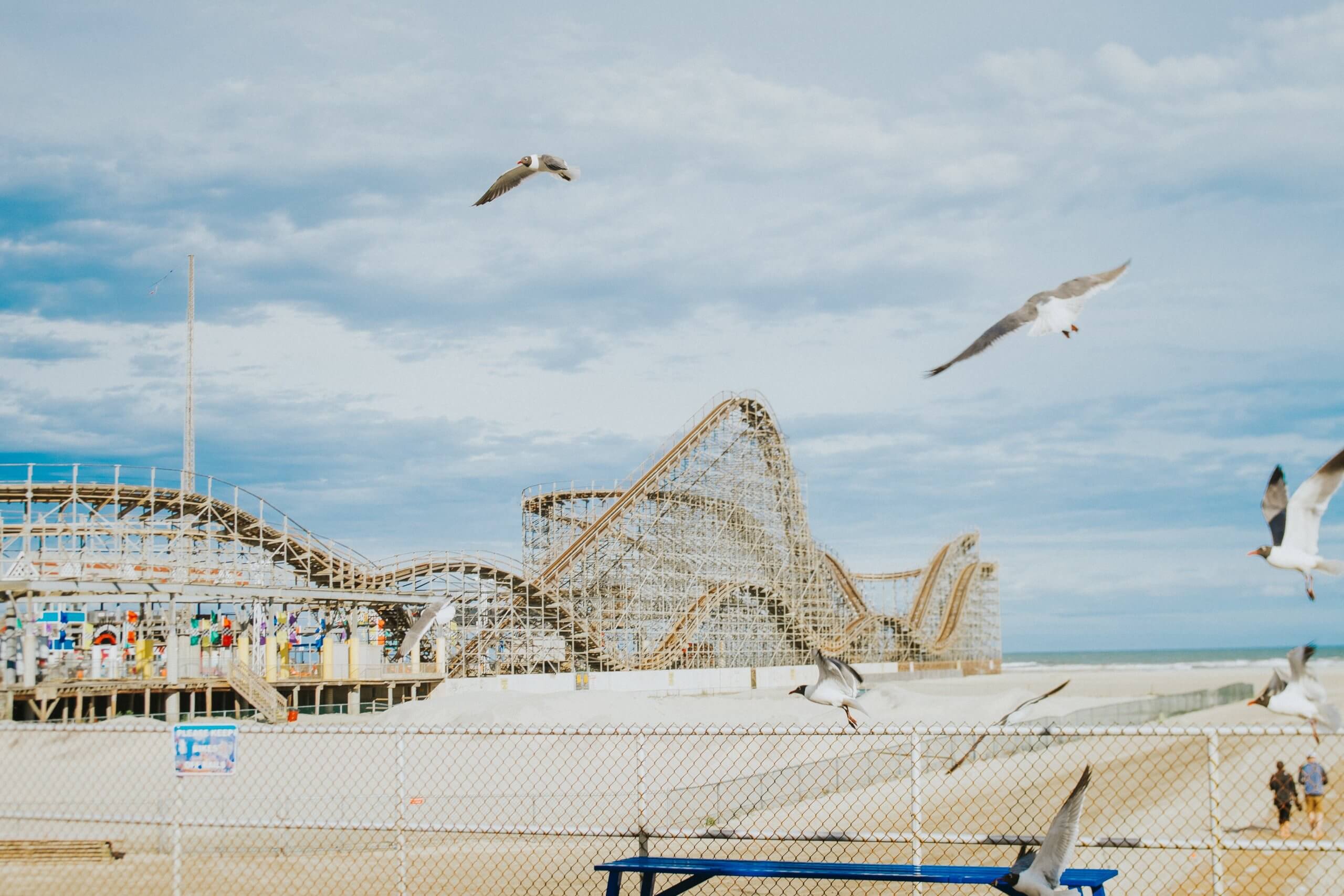Shore Musings is a column about year-round life on the Cape: the good, the bad, the beautiful.
I’ve noticed a strain of sadism from beach-goers, local and shoobie alike, towards seagulls. There’s a sense among two-legged fleshy folk on the beach that gulls don’t belong or are a nuisance to be tolerated at best. Mention “seagull” to any random bloke and within three sentences they’re telling you how they’d punch those suckers if they could. Ocean City goes so far as to hire trained predatory birds, under the control of keepers, to scare away seagulls from the boardwalk.
Picture it: the year is 1760, textile production has been completely revolutionized with the advent of the steam motor and water-powered textile machines. It’s New York, the late 19th century. Factories are pumping out cheap consumer goods en-masse for the first time in human history. It’s 1913, Henry Ford made everyone look like a chump with his moving assembly lines. It’s 2024 – you’re on the Wildwood beach enjoying the fruits of modern life, a beautiful plastic-wrapped hoagie in hand. A seagull, unaware of industrial progress but ready to enjoy its fruits, swoops down and steals your $12 hoagie.
I’ve seen strong men break in this kind of situation. My twin famously attacked a seagull with a plastic shovel, fresh off the production line, for stealing their PB&J. Ask pretty much anyone what they think of seagulls and they’ll tell you they’re no-good nasty sky rats.
But seagulls are among the most intelligent birds on the sea and have been opportunistic feeders long before humans carried buckets of Curly Fries around. It’s like getting mad at a dog for eating food you dropped on the floor. Buddy, who dropped the food?

Gulls use primitive tools, set bread out to bait fish, and have complicated social patterns within their (noisy, stinky) colonies. The laughing gull – the one with the famous multi-part cackle – is basically Cape May County’s mascot. Lillian Armstrong, my contact at the NJ Audubon plans their special events – said that Hereford Inlet, between the Wildwoods and 7-mile island, is home to the largest laughing gull colony in the world.
But yes – feeding seagulls is a problem. Their little bodies aren’t meant to process whatever fried delight sits in your hand. Gulls live as long as 40 years, and a long-term diet of human food will be the death of them.
I’m driving through the McDonald’s drive-through in Court House – a line is forming in front of me, folks are blaring their horns at a mob of gulls going hog wild on a medium fry splayed on the hot pavement. Sorry buddy, honk your Suburban all you want. Those seagulls are the smartest guys on the road, but even they don’t realize that just one more fry will one day be the death of them. The seagull problem might be a cause for introspection, about the kind of society we’ve created and how humans completely up-end ecosystems without care for the creatures that depended on them.
So I try to have empathy for gulls even though they poop on my car.









